The Romans were not only famous for their great empire and influential culture but also for their significant maritime achievements. Their mastery of the Mediterranean Sea laid the foundation for Rome’s expansion and maintained its dominance for centuries. They even called it “Mare Nostrum” – Our Sea. The creation of advanced naval technology, such as the development of the Corvus boarding device, altered the course of naval warfare and helped secure Roman victories at sea and their maritime achievements.
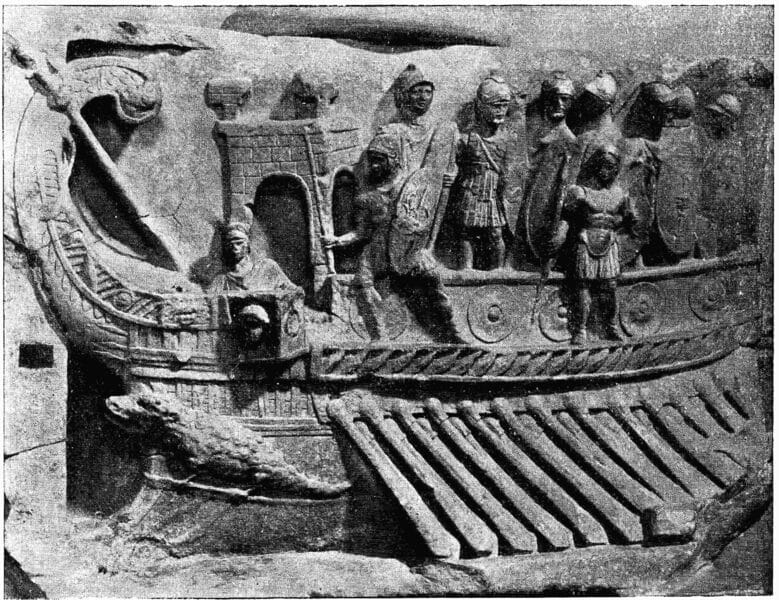
Shipbuilding was revolutionized during the Roman era with innovations that improved the speed, durability, and size of their vessels. These advancements, coupled with a widespread maritime trade network, underscored the importance of the sea in Roman economic and military strategies.
Key Takeaways
- Maritime Dominance: The Romans mastered the Mediterranean, which was crucial for their empire’s expansion and control.
- Innovative Technology: The Corvus boarding device revolutionized naval warfare, enhancing Roman combat effectiveness.
- Advanced Engineering: Roman engineers designed sophisticated harbors and improved shipbuilding, boosting trade and military logistics.
- Versatile Vessels: The Romans created various ships like the liburna for speed and the Navis Oneraria for cargo, supporting diverse maritime needs.
- Navigational Tools: Early tools like the quadrant and astrolabe, along with portolan charts, improved Roman navigation and exploration.
- Record-Keeping: The ship’s log documented voyages, aiding navigation and strategic planning.
The early Roman Republic, understanding the need to protect and expand its interests, saw the strategic value of a strong naval arm. Initially, the Romans were not a seafaring people compared to their maritime neighbors. However, the First Punic War against Carthage was a significant catalyst for Rome’s maritime ambitions. Recognizing the necessity for naval prowess to control the Mediterranean Sea – a pivotal trade nexus – they built their first fleet. Using a captured Carthaginian galley as a model, the Romans rapidly expanded their naval capabilities.
Their fleet was improved by the Corvus, a boarding device that transformed naval confrontations. This innovation leveraged Rome’s strength in ground warfare, as it allowed Roman soldiers to board enemy ships and engage in hand-to-hand combat. The use of the Corvus showcased the Romans’ adaptability and ingenuity in engineering and military tactics, embodying their application of Roman law and organizational skills to naval warfare.
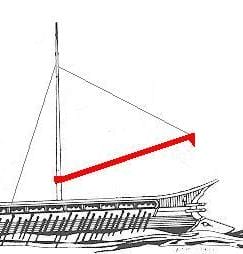
Roman Shipbuilding Mastery
The Roman mastery of shipbuilding was grounded in large access to resources, particularly quality wood from within their territories, and their advances in maritime engineering. Roman ships varied in size and design according to their purposes; from the swift liburnians to the massive quinqueremes, Rome’s arsenal was vast and versatile. These vessels were the backbone of Roman naval power, facilitating the projection of military might and the protection of trade routes against piracy.
Roman engineering understanding is illustrated in their ship design and construction techniques, including the use of multiple banks of oars and the implementation of sophisticated hull designs for different maritime roles. The longevity and effectiveness of Roman galleys were a testament to the engineering prowess of the age.
The Senate played a crucial role in allocating resources for the creation and maintenance of the fleet, ensuring that the naval arm remained a vital component of Roman strategic power. Such investment in naval forces was a clear declaration of Rome’s intent to dominate the seas, strengthening its status as a formidable Mediterranean power.
1. The Development of the Corvus Boarding Device
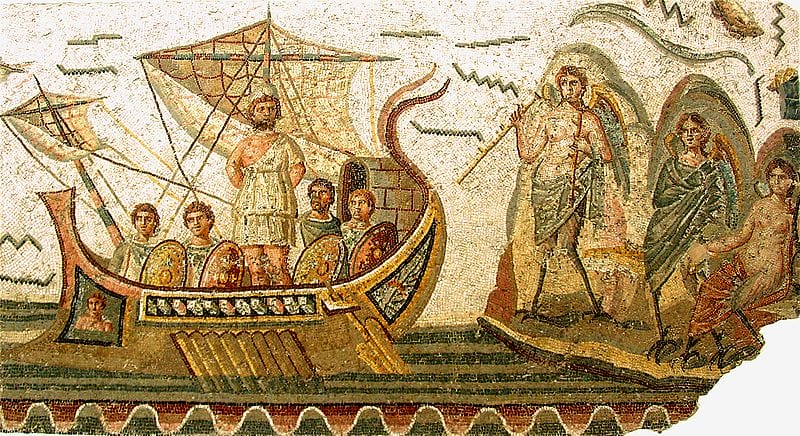
The Corvus, a key maritime invention, was engineered by the Romans during the naval confrontations of the First Punic War. This device immensely fortified Rome’s naval capability by facilitating their infantry to engage in close-quarters combat on water, a novel tactic that offset their inexperience in seafaring warfare.
Constructed largely of wood, the Corvus functioned as a bridge that could be dropped onto an enemy ship’s deck, establishing a secured pathway for Roman soldiers to transfer directly onto opposing vessels. The lower end of the Corvus featured a heavy, spiked metal attachment. Once deployed, the sharp spikes would lodge into the enemy deck, providing stability for the boarding attack.
Notably, the Romans were acclaimed for their architectural prowess, evident in structures like aqueducts and bridges underpinned by their use of Roman concrete and mastery of arches. The principles used in these accomplishments likely influenced the Corvus design, which required both robustness to withstand intense naval engagements and precision to ensure successful deployment.
The liburna was a type of fast and maneuverable Roman warship used primarily during the late Republic and early Empire. It had a narrow hull, a single row of oars on each side, and was highly effective for both naval combat and reconnaissance missions. Its design allowed for greater speed and agility compared to other warships of the time.
The ship was also equipped with a ram at the prow, which was used to strike enemy vessels. This feature, combined with its speed, made it effective in hit-and-run tactics and boarding actions. The liburna played a crucial role in various naval battles and was used extensively by the Roman navy throughout its history. Its design influenced the development of later naval vessels and contributed to the success of Roman maritime operations.
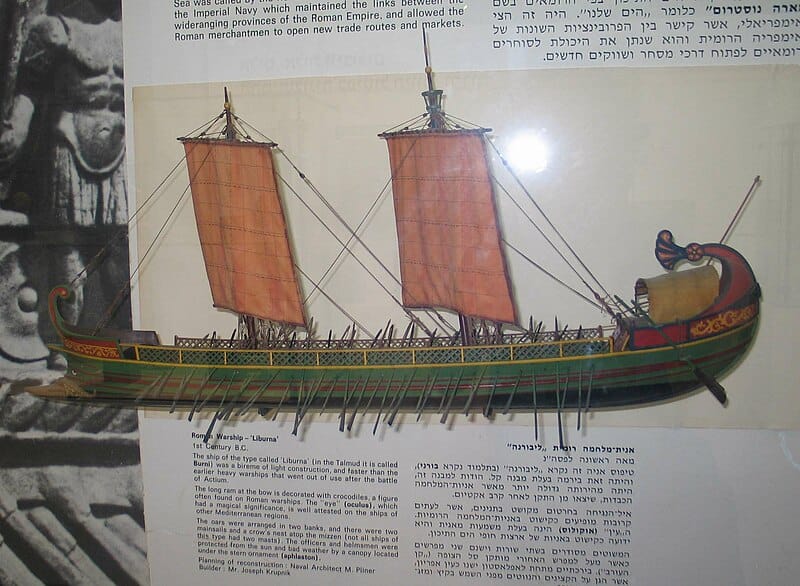
The Navis Oneraria was a large Roman cargo ship designed for transporting goods, troops, and supplies. It featured a broad, flat-bottomed hull that provided stability and ample cargo space. These ships were essential for maintaining trade routes and military logistics throughout the Roman Empire.
Typically, the Navis Oneraria had a single deck and was equipped with a simple rigging system for sailing. Its size could reach up to 30-40 meters (about 100-130 feet) in length, which enabled it to handle large volumes of cargo. The ship was built to withstand rough seas and ensure a smooth voyage, making it essential for maintaining trade routes and supporting the logistics of the Roman Empire.
3. Quadrant and Astrolabe
Romans used navigational instruments such as the quadrant and astrolabe to determine their position at sea. The quadrant was a device used to measure the altitude of celestial bodies above the horizon. It was a quarter-circle instrument marked with degrees, allowing sailors to determine their latitude by measuring the angle of the sun or stars. This measurement helped navigators estimate their position relative to the equator. The quadrant was typically made of wood or metal and could be quite large, with a sighting mechanism to accurately determine angles.
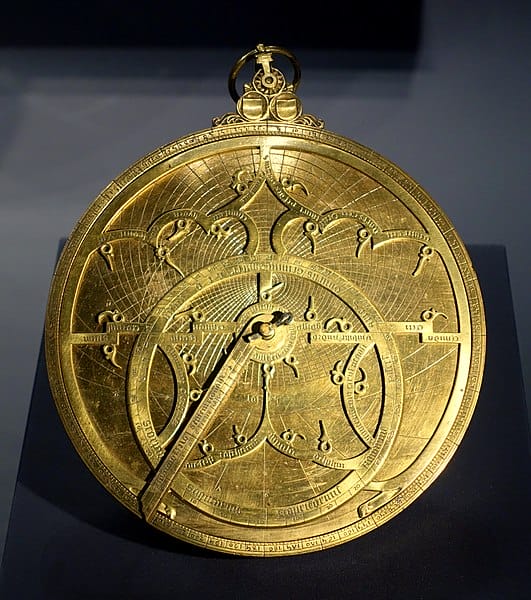
The astrolabe was a more advanced and versatile instrument used for both navigation and astronomical observations. It consisted of a flat, circular disk with a movable pointer (called an alidade) and various scales for measuring the positions of stars and planets. The astrolabe could be used to determine latitude by measuring the altitude of celestial bodies, as well as to solve problems related to timekeeping, astrology, and calendar calculations. It was a sophisticated tool that combined mathematical and observational techniques to aid in navigation and scientific inquiry.
4. Nautical Maps (Portolan Charts)
Nautical maps, or portolan charts, were detailed maps used by Roman sailors to navigate the seas. They provided valuable information about coastlines, harbors, and navigational hazards.
Portolan charts were known for their accuracy in depicting coastlines and were used to plot courses and avoid dangers. They typically featured detailed outlines of coastal regions, marking key ports, landmarks, and dangerous areas. The charts often included a grid of compass roses or wind roses, showing directions and helping sailors determine their bearings.
These maps were created by combining observations from voyages with knowledge passed down by earlier navigators. The charts improved over time as more information was collected, making them essential tools for maritime navigation in the Roman Empire and beyond.
5. Ship’s Log (Nautical Journal)
Romans used early forms of a ship’s log or nautical journal to record details of voyages, weather conditions, and navigational observations. This helped in planning and recording important maritime information. The Roman ship’s log, or nautical journal, was an essential tool for recording details of maritime voyages. These logs were used to document information such as the ship’s course, speed, weather conditions, and significant events. The main purpose was to aid navigation, track progress, and provide valuable data for future reference.
Logs were often kept on materials like wax tablets or parchment. Wax tablets were favored for their reusability, allowing sailors to make temporary entries and erase them as needed. Parchment or papyrus was used for more permanent records. The information recorded included the ship’s position, distances traveled, changes in weather, and any notable incidents or encounters with other ships. This documentation helped sailors make informed decisions, refine navigation techniques, and manage maritime operations more effectively.
People Also Ask:

Source: Unknown artist, Public domain, via Wikimedia Commons
What were the key technological advancements in Roman engineering that helped their maritime achievements?
The Romans implemented several innovations in shipbuilding, such as the use of multiple masts and advanced hull designs that increased stability and speed. They integrated the Corvus, a boarding bridge, which transformed naval encounters. The development of harbors with concrete allowed for sturdier and more durable maritime infrastructure.
The Battle of Actium in 31 BC and the Battle of the Aegates Islands in 241 BC are among the most pivotal. The former cemented Octavian’s power, leading to the rise of the Roman Empire. The latter effectively ended the First Punic War, showcasing the potency of the Roman navy and its strategies.
What types of ships did the ancient Romans use for maritime activities?
Romans utilized various classes of ships, tailored for different purposes. The vast merchant fleets consisted of cargo ships like the corbita. Warships included the swift biremes and the formidable triremes, designed for battle and dominance at sea.
Naval superiority allowed the Romans to secure trade routes and effectively transport troops and resources. Notably, it was instrumental in victories during the Punic Wars, which extended Rome’s reach across the Mediterranean, establishing a dominant maritime presence that directly contributed to the empire’s expansion.
What architectural developments supported Roman maritime achievements?
Outstanding architectural contributions such as the construction of the Portus Julius and the use of pozzolana concrete revolutionized marine accommodation and ship repair facilities. The creation of lighthouses, like the Pharos of Alexandria, facilitated safer sea travel and trade.
In what ways did Roman maritime strategy evolve during their prominence?
As threats and opportunities shifted, so did Roman maritime strategy. From initially focusing on Greek-style ramming tactics, they evolved to implement boarding techniques using the corvus. They also advanced in developing naval blockades and protecting crucial maritime trade routes against piracy, which helped their maritime achievements.
Hello, my name is Vladimir, and I am a part of the Roman-empire writing team.
I am a historian, and history is an integral part of my life.
To be honest, while I was in school, I didn’t like history so how did I end up studying it? Well, for that, I have to thank history-based strategy PC games. Thank you so much, Europa Universalis IV, and thank you, Medieval Total War.
Since games made me fall in love with history, I completed bachelor studies at Filozofski Fakultet Niš, a part of the University of Niš. My bachelor’s thesis was about Julis Caesar. Soon, I completed my master’s studies at the same university.
For years now, I have been working as a teacher in a local elementary school, but my passion for writing isn’t fulfilled, so I decided to pursue that ambition online. There were a few gigs, but most of them were not history-related.
Then I stumbled upon roman-empire.com, and now I am a part of something bigger. No, I am not a part of the ancient Roman Empire but of a creative writing team where I have the freedom to write about whatever I want. Yes, even about Star Wars. Stay tuned for that.
Anyway, I am better at writing about Rome than writing about me. But if you would like to contact me for any reason, you can do it at [email protected]. Except for negative reviews, of course. 😀
Kind regards,
Vladimir
